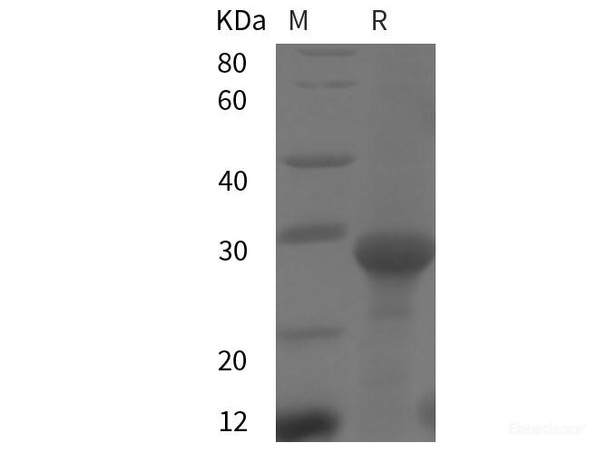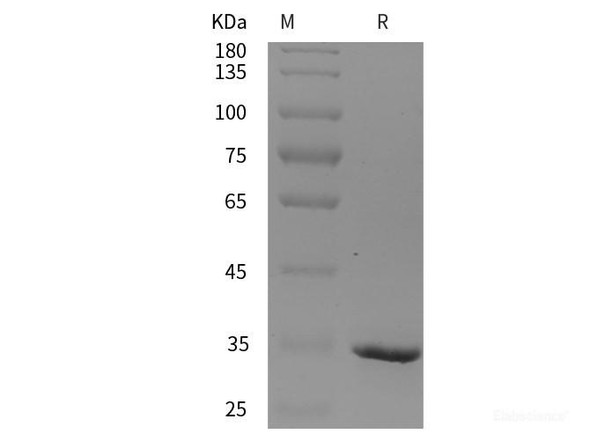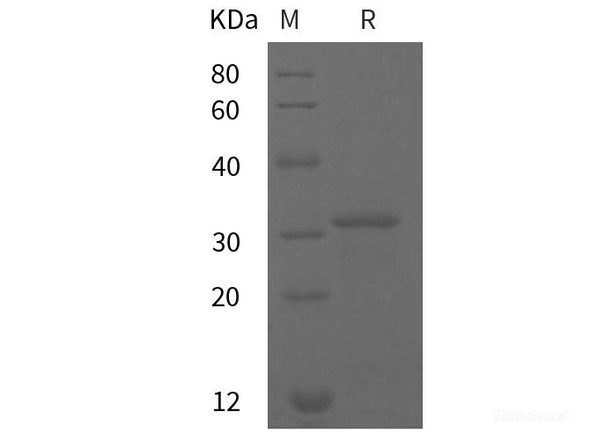Rat TGFBR1 Recombinant Protein (His tag)
- SKU:
- RPES5899
- Product Type:
- Recombinant Protein
- Species:
- Rat
Frequently bought together:
Description
| Product Name: | Rat TGFBR1 Recombinant Protein (His tag) |
| Product Code: | RPES5899 |
| Size: | 20µg |
| Species: | Rat |
| Expression Host: | E.coli |
| Synonyms: | AAT5, Activin receptor like kinase 5, ACVRLK4, ALK-5, LDS1A, LDS2A, MSSE, SKR4, TbetaR I, TGF-beta receptor type-1, TGFBR1, Transforming growth factor beta receptor 1 |
| Mol Mass: | 20.9 kDa |
| AP Mol Mass: | 28 kDa |
| Tag: | N-His |
| Purity: | > 95 % as determined by reducing SDS-PAGE. |
| Endotoxin Level: | Please contact us for more information. |
| Bio Activity: | Testing in progress |
| Sequence: | Leu 311-Met 501 |
| Accession: | P80204 |
| Storage: | Generally, lyophilized proteins are stable for up to 12 months when stored at -20 to -80°C. Reconstituted protein solution can be stored at 4-8°C for 2-7 days. Aliquots of reconstituted samples are stable at < -20°C for 3 months. |
| Shipping: | This product is provided as lyophilized powder which is shipped with ice packs. |
| Formulation: | Lyophilized from sterile PBS, pH 7.4. Normally 5 % - 8 % trehalose, mannitol and 0.01% Tween80 are added as protectants before lyophilization. Please refer to the specific buffer information in the printed manual. |
| Reconstitution: | Please refer to the printed manual for detailed information. |
| Background: | Most cell types express three sizes of receptors for TGF-beta. These are designated Type I (53 kDa), Type II (70-85 kDa), and Type III (250-350 kDa). The Type III receptor, a proteoglycan that exists in membrane-bound and soluble forms, binds TGF-beta 1, TGF-beta 2, and TGF-beta 3 but does not appear to be involved in signal transduction. The Type II receptor is a membrane-bound serine/threonine kinase that binds TGF-beta 1 and TGF-beta 3 with high affinity and TGF-beta 2 with a much lower affinity. The Type I receptor, originally known as ALK-5 (Activin receptor‑like kinase) is also a membrane-bound serine/threonine kinase that apparently requires the presence of the Type II receptor to bind TGF-beta. Current evidence suggests that signal transduction requires the cytoplasmic domains of both the Type I and Type II receptors. |










